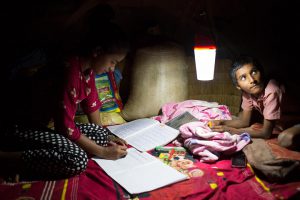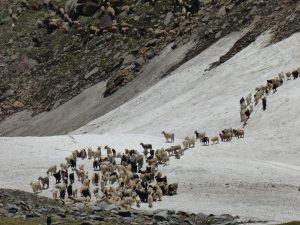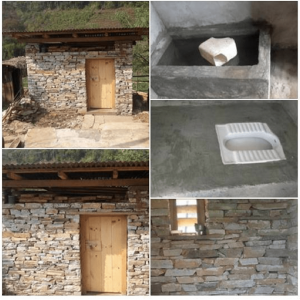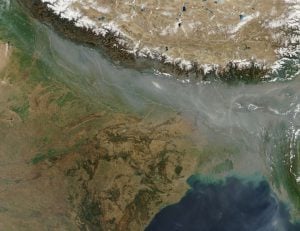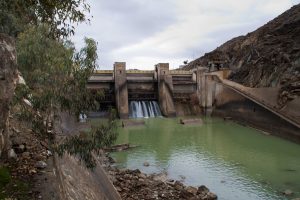Saffron is not only the heritage crop of Kashmir but has also been a lucrative agricultural activity in the region for decades. It is considered the world’s costliest spice, and Kashmiri varieties fetch around USD 3,000 per kg although prices have dropped in recent years.
In 2011, the fame of Kashmiri saffron was used as an anti-narcotics candidate for weaning Afghanistan’s farmers away from poppy when farmers’ delegations from that country were invited to Kashmir for learning the skills of growing saffron from Kashmiri farmers and agricultural experts.
The mountainous Kashmir valley has always had a monopoly in saffron production in India and the production of this high-value crop had reached its peak in the 1990s in the Kashmir region with an annual average of around 15.5 metric tonnes over 5,700 hectares.
Impacted by Climate Change
But both saffron land and crop production have declined in recent years. According to Kashmir’s agriculture department, saffron land has got reduced from 5,700 hectares in 1990s to 3,715 hectares in 2016, while per hectare production has come down to 1.88 kilograms.
![Saffron flowers in the fields [image by PG Goran]](/wp-content/uploads/2016/11/P.G.Goran_.jpg)
“I am planning to convert another kanal (one-eighth of an acre) of saffron land into garlic cultivation because garlic now fetches good money in the market,” Bhat said. He and his fellow farmers said that a number of others have done so while some others find it more profitable to sell saffron land to builders or carry out constructions themselves on it despite the Saffron Act , under which changing saffron land for any other use is banned.
The farmers said that a few spells of rain, from the month of August to October, play a crucial role in flowering of the saffron crop. “But, in most of the years since late 1990s, we have been witnessing that these months pass off without any rainfall,” said Dilawar Reshi, a farmer in south Kashmir’s Pulwama, where 90 per cent of Kashmir’s saffron is grown.
Firdous Nahvi of Kashmir’s Sher-e-Kashmir University of Agricultural Sciences and Technology (SKUAST), who has carried out extensive research on saffron and has been helping farmers rejuvenate the saffron crop though a USD 60 million federal farm ministry project, said that the issue of irrigation is the actual reason why saffron yield is on decline.
“Creating sprinkle irrigation facility was the critical part of the project because we have observed in recent years that it doesn’t rain when the crop needs the moisture. In any part of the world, farming is unthinkable without water,” Nahvi said and added that other help for farmers like providing fertilizers and corms (seeds) to them [as part of the project] is useless unless their crop gets sprinkle irrigation. The government project, launched in 2010, was supposed to create the irrigation facility four years back, but is yet to do so.
Agriculture and climate change
According to the 5th IPCC assessment report, on a global level, climate change could affect food security by the mid-21st century and that most of the food insecure would continue to be in South Asia, where there are currently roughly 300 million undernourished people.
“Climate-related declines in food productivity will impact livelihoods and exports, increasing poverty levels. For instance, in Bangladesh, these factors would cause a net increase in poverty of 15% by 2030,” the report said.
A report prepared by Climate Action Network South Asia and Asia Pacific Adaptation Network says that agriculture is the mainstay of several countries in South Asia and is also one of the largest sources of employment continuing to be the single largest contributor to the GDP in the region. As three-fifth of the cropped area is rain-fed, the economy of South Asia, says the report, hinges critically on the annual success of the monsoons, indicative of the well-being of millions. “In the event of a failure, the worst affected are the landless and the poor whose sole source of income is from agriculture and its allied activities,” it said.
Farmers’ Response
Farmers in south Asia are already struggling with the climate-related changes and have started responding to them. “The common perception of farmers towards the impacts of climate change at least in four states of India — Andhra Pradesh, Telangana, Maharashtra and Karnataka — where I carried out my survey, was rising temperatures, decreasing precipitation and prolonged dry spells,” said Ravi Shankar, Principal Scientist at the Central Research Institute for Dryland Agriculture (CRIDA) in Hyderabad. “The common adaptation measures by farmers towards these changes are buying insurance, change in planting dates and cropping pattern, and planting different crops.”
For example, Shankar says, staggered sowings, change in planting dates, requiring of drought-resistant crops, and construction of water-harvesting structures are the major adaptation measures followed by farmers toward climate change in Mahbubnagar district of Andhra Pradesh.
“Also, the farmers in Mahbubnagar are used to observe the pattern of rainy season,” said Shankar, the lead author of Climate Change and Agricultural Adaptation in South Asia. If the pattern sustains itself, they continue farming, otherwise, they migrate and work as construction labourers at Gangavati, Hyderabad, and Bangalore.”
A study carried out in 2015 in three districts of Punjab province of Pakistan, has identified a number of climate-related risks perceived by farm households such as extreme temperature events, insect attacks, animal diseases and crop pests. “Limited water availability, high levels of poverty and a weak role of local government in providing proper infrastructure were the factors that make farmers more sensitive to climate-related risks,” the study says.
“Due to these constraints, adaptation in agricultural is self-initiated and varies [in] different socio-economic settings such as level of education, land holdings, tenancy status, access to institutional resources and farm location,” said one of the authors of the study, Muhammad Abid of Centre for Earth System Research and Sustainability, University of Hamburg. “Small farmers, less educated and tenants mainly prefer to adopt short term or low cost adaptation measures such as changing cropping varieties, crop types or planting sowing dates. On the other hand, the adoption of long term or advanced adaptation measures such as crop diversification, soil and water conservation is only considered by either highly educated or large farmers.”
Adaptive capacity
According to Abid, to enhance the adaptive capacity of farmers and adaptation in the agriculture sector, serious efforts are required in the functioning of local agricultural institutions and their scope. Further, he says, policies need to be designed based on field based research and should be area specific considering local issues and needs. “New adaptation measures need to be developed through research and informed to farmers accordingly through extension.”
Using data from a household survey of 2660 farm families in Bihar state of Eastern India, Terai of Nepal and coastal Bangladesh, a study in Current Science in April 2016 says that late or early planting, adopting new crops or varieties, introducing legumes in rotations, and planting improved, disease- and pest-tolerant varieties are the most frequently cited changes being made to farming practices in these surveyed areas.
“While we did not attempt to isolate climate-resilient practices per se, it does appear that these shifts are related to rainfall and water-related constraints. Other studies show that in certain parts of Nepal’s Terai and India, many households have shifted to rice varieties that require less water and/or that can be sown at a later date to adapt to rainfall variability,” the study has found. The study says that strategies such as adjusting planting dates and new varieties have been found to contribute to climate change adaptation.
Drought tolerant
According to International Crops Research Institute for the Semi-Arid Tropics (ICRISAT), farmers in Sri Lanka are shifting from annual crops to perennial drought tolerant plantations like cashew, particularly in rain-fed areas where the potential for irrigation is not available. This move is mainly driven by the urge to avoid the risk of crop failure.
It says that farmers are also moving towards the use of short duration varieties, hybrids and drought tolerant varieties wherever seed is available. Another important adaptation strategy is diversification of the means of livelihood by marginal and smallholder farmers.
Farmers in Sri Lanka, according to the ICRISAT, experience difficulty in accessing inputs and this is probably an impediment to effective adaptation of any improved management practice. It further says that farmers have diversified their incomes into nonfarm sectors and business. “Outward migration and earnings from service are the major sources of diversification. In recent times, income diversification has reduced the risk of rainfall variability through reduced dependence on agricultural incomes.”
About Bangladesh, ICRISAT says that the farmers perceive that more efficient and increased irrigation potential through surface and groundwater sources will improve their production sustainability and productivity.
“Farmers feel that crop insurance will help them cover the risks, but the present scheme of Crop Insurance is with private players and the farmers perceive that it is not universal in its coverage. A universal Crop Insurance scheme that covers all crops will be of great help to the farmers.”
![<p>Saffron flowers in bloom [image by Sarah Adams]</p>](https://dialogue.earth/content/uploads/2016/11/Sarah-Adams.jpg)


